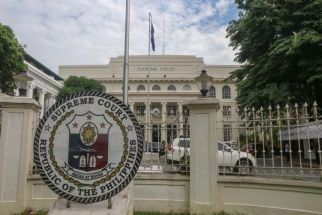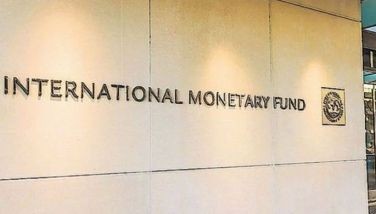Who said the worst is over?

In a financial crash the world hasn’t seen for quite a while, two of the biggest global financial institutions were driven to extinction in what has become as another fallout in the 14-month-old home loan crisis that started in the US.
The collapse of Lehman Brothers, the sale of Merill Lynch & Co. to Bank of America, and the convulsions of American International Group Inc. created more than just ripples across continents of the world.
Just a week before, the US government took over mortgage financiers Fannie Mae and Freddie Mac, and six months earlier, Bear Stearns Cos. was forced to sell to JPMorgan Chase & Co.
The shakeup was so great it pushed the Standard & Poor’s 500 Index to unprecedented levels never seen since the 9/11 terrorist attacks and doubled the cost of borrowing in dollars overnight amid assurances from central banks all over the world of their full support as the world’s financial system grapple with liquidity in the face of panic withdrawals and sell-offs.
In a show of solidarity, central banks in the US, European Union, Japan and Australia pumped in more than $220 billion in cash in major markets in the days after the Lehman collapse to ensure that there would be enough funds to finance withdrawals by investors who had lost faith in the money markets and any investment instrument perceived as risky. On the other hand, the US government’s rescue of AIG will leave it owning 80 percent of the company that was once considered in the financial circle as too big and invulnerable.
Fluid situation
The situation is very fluid, even in a country like the Philippines where the imprints of Lehman’s bankruptcy, the biggest in US history, is described as minimal.
Two of the Philippines’ biggest lenders, Bando de Oro and Metropolitan Bank & Trust Co. last week said they had set aside close to $100 million to cover their exposure to Lehman. Others like Rizal Commercial Banking Corp. and Security Bank also disclosed exposure to Lehman or Merill Lynch.
Offhand, it seems the fallout on the domestic financial system could be contained. BSP Governor Amando Tetangco has assured the public that the banking system’s exposure to Lehman won’t exceed 0.4 percent of their more than P5 trillion total assets.
More importantly, the central bank chief ascertains there’s enough liquidity in the financial markets to fund any prolonged and continued withdrawals, and that if ever, the central bank has a stand-by facility that the concerned banks could tap.
The media reported seven banks with exposure to Lehman totaling $386 million. Banco de Oro accounted for $134 million while Development Bank of the Philippines had about $90 million.
Several others have similar exposure to Merill Lynch, which shouldn’t be a problem because unlike Lehman, Merill was bought by Bank of America, which makes somebody responsible for its bad loans.
Even in terms of capital adequacy, Philippine banks would be able to keep their heads above water should there be any losses on the structured products bought from Lehman.
Worst not over
But as we’ve seen happen several times in this crisis spawned by the US home mortgage, the worst is far from over.
What could spell bigger trouble in the Philippines would be how the troubled AIG, the largest insurer in the US, would cope. This could hold the key as to how the local unit and affiliate Philam Life intends to weather the storm.
Already, there are talks that Philam’s mutual funds could get seriously hit, primarily due to a crisis of confidence in the company.
Should this happen, we may again see heavy withdrawals from the financial system that could spur a sell-off in fixed-income assets similar to the Unit Investment Trust Fund (UITF) fiasco in the second quarter of 2006.
Revising targets downwards
The Asian Development Bank said the continuing fallout from the housing crisis had increased risks in growth targets throughout Asia, and worse, that it’s happening at a time when inflation is still at elevated levels.
The cash crunch that naturally follows a crisis such as what is happening will constrict capital flows to the region, especially in emerging markets like the Philippines. This will hit hard on the local currency.
Already, the peso had fallen to the 47-level and traders are projecting it could go down to 49 even with the incoming remittance season.
Now that the bet has turned against the peso, even the families of overseas workers are betting on depreciation and are trying to delay converting their dollars on expectations that in the coming months, they would get more pesos for their greenbacks.
At this rate, economic growth this year will definitely falter. Even economic planning secretary Ralph Recto was candid enough to admit that GDP expansion could slow down to between 4.7 percent and 5.5 percent from last year’s 7.2 percent.
The ADB has likewise adjusted its growth forecast for the Philippines to 4.6 percent, and estimates from the International Monetary Fund will likely be lowered as well.
At this point, nobody is taking comfort from the age-old adage that lightning won’t strike twice. We’ve seen financial markets roil several times already and the last time somebody said the worst is over was several months ago, from no less than the Lehman CEO himself.
As they say, when the U.S sneezes the world catches cold. Now that it is having convulsions, the rest of the world will just have to hold its breath and watch anxiously as the drama continues to unfold. Meantime, let’s hold on to what little we have as the storm brews over. Life goes on.
Collegiate Champions League update
The first of several regional championships in the SMART-PLDT-Champions League 2008 Collegiate Championship games will start today at the Naga City gymnasium and end on September 28.
The University of Nueva Caceres Greyhounds, Naga City champion, is ranked as no. 1 and leads the six teams that qualified to the regional finals. Ranked second is the champion of the Quezon league, Manuel S. Enverga University. Third ranked is Computer Communications Development Institute, champion of the Sorsogon collegiate league.
The other Region 3 finalists are the Ateneo de Naga Golden Knights, Aemillianum College of Sorsogon and the Computer Science & Technology College from Sariaya, Quezon.
The winner of the Naga games will receive the regional champion’s trophy and athletic items courtesy of Sonia Trading, distributor of Molten, the official PCCL basketball.
The Region 3 champion will also advance to the Zone 2 championships to be held in November. Included in the zonal games are the UAAP fourth placer, University of the East, the NCAA-South Champion and three wild card entries. The top two in the zonal championships will join the elite group in the FilOil Flying V “Sweet 16” Final Challenge competitions in Manila.
For more details about the biggest collegiate basketball event for the year sponsored by SMART and PLDT, visit the official website, www.CollegiateChampionsLeague.net.
Should you wish to share any insights, write me at Link Edge, 25th Floor, 139 Corporate Center, Valero Street, Salcedo Village, 1227 Makati City. Or e-mail me at [email protected]. For a compilation of previous articles, visit www.BizlinksPhilippines.net.
- Latest
- Trending




























